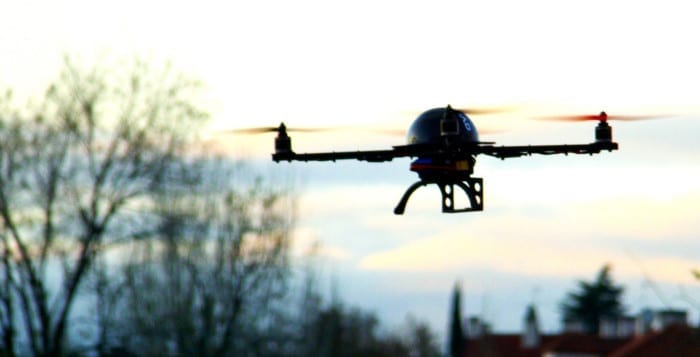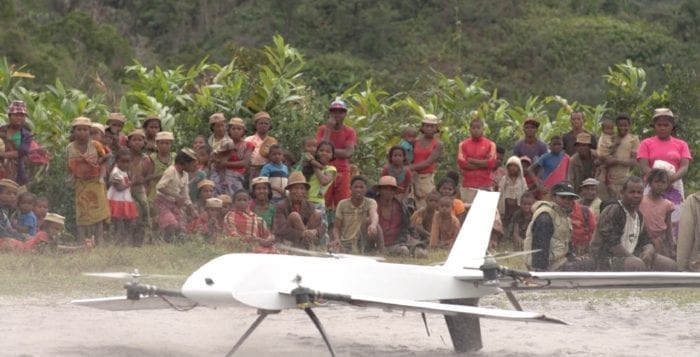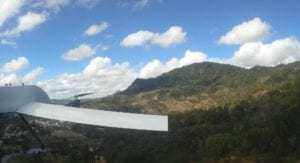Huntington town officials’ proposal to create a permit to allow drones to fly over town parks and beaches has hit turbulence with hobbyists and commercial pilots.
Huntington town board held a public hearing June 5 to consider creating a permit process that would allow the recreational and commercial use of unmanned aircraft systems, such as model aircrafts or drones, on town-owned parks and beaches for the first time since 2015.
“We are seeing it happen anyway,” said Councilman Mark Cuthbertson (D). “We want to be able to regulate and have a say about it.”
In October 2015, the town adopted a law sponsored by Cuthbertson that made it illegal to pilot an unmanned aircraft on private property or town property without the owner or the town’s consent. It defined an unmanned aircraft as “a non-human carrying aircraft weighing no more than 55 pounds, capable of sustained flight in the atmosphere intended exclusively for sport, recreation, education and/or competition and is typically guided by remote control or onboard computers.”
“Drones have been a fantastic tool for getting students involved in STEM and aviation.”
– Scott Harrigan
While the original law said the pilot of the craft would have to receive consent from town board to fly at town-owned property, parks and beaches, it did not lay out a process.
Under the proposed changes, if approved, a model airplane or drone pilot will have to file an application with the town attorney’s office for a permit to take off and fly their aircraft over town-owned property at least five days in advance. The pilot will be required to provide: a specific date and time the aircraft will be flown; a full description of any photo, video or audio recording capabilities; the location over which the activity will take place; and a statement confirming whether it is for commercial or recreational activity.
Several drone hobbyists and commercial operators stepped forward June 5 to offer feedback on the town’s proposal.
“I care very deeply about keeping Long Island a place where people can freely fly drones for business and pleasure. Drones have been a fantastic tool for getting students involved in STEM and aviation,” said Scott Harrigan, CEO of the Oyster Bay-based Harken Aerial that offers commercial drone photography. “A lot of people call it a gateway drug to aviation.”
Harrigan commended town officials for considering a permit process but had concerns regarding how the detailed information required could restrict drone use.
“The biggest logistical issue you run into is weather, requiring X amount of days for notice of operation is difficult,” Harrigan said. “What I’d like to see addressed is some relief for weather or rescheduling.”
Ed Anderson, a recreational model airplane pilot from Syosset, agreed that requiring five days notice before flying would eliminate possible recreational use by hobbyists.
“The biggest logistical issue you run into is weather, requiring X amount of days for notice of operation is difficult.”
– Harrigan
Both Harrigan and Anderson suggested the town look closer at modeling its laws after the Town of Oyster Bay’s regulations, which offer a seasonal and nonseasonal permit rather than for one-time use.
Harrigan also took issue with the town’s stipulation that any camera, video or audio recording by a drone couldn’t take place where there is a “reasonable expectation of privacy.”
“That’s a vague and meaningless term,” he argued. “I can walk out onto a beach with a camera and there’s no right to restrict. Now, I have a $40 drone that I picked up from Toys ‘R’ Us with a camera on it at 15 feet over head, and I have violated a law.”
Cuthbertson, who is a practicing attorney with experience in municipal and land use law, said the phrase “reasonable expectation of privacy” is commonly accepted legal term that has well-defined limitations.
The proposed changes will not affect the current punishment for those who violate town code consisting of a fine exceeding $1,000 or imprisonment for up to 15 days. Massapequa Park resident Kenneth Kramer, a model airplane enthusiast and licensed commercial drone pilot who often flies in Huntington area, asked the town to reconsider amending this.
“The Town of Oyster Bay is having a problem with people knowing about the permit process,” Kramer said. “If you are going to be charging people, that it is going to be a hardship on the average family.”
Supervisor Chad Lupinacci (R) assured that the town was soliciting feedback and would consider some of the suggestions made prior to changing the code.
“It’s a good start, and we would love to make it better,” he said.








